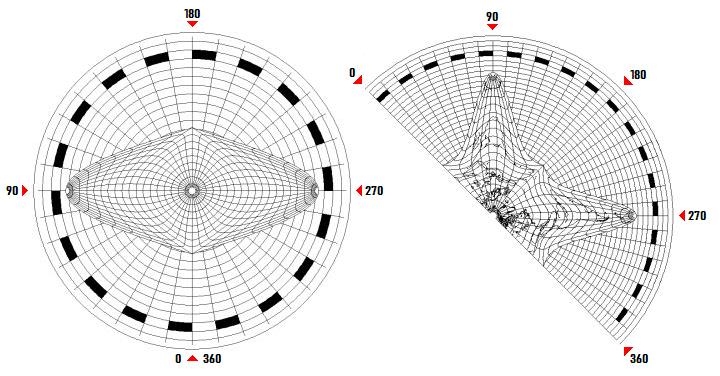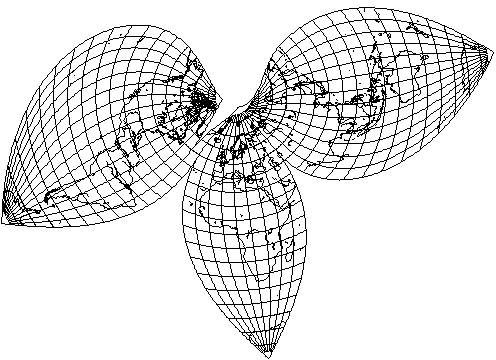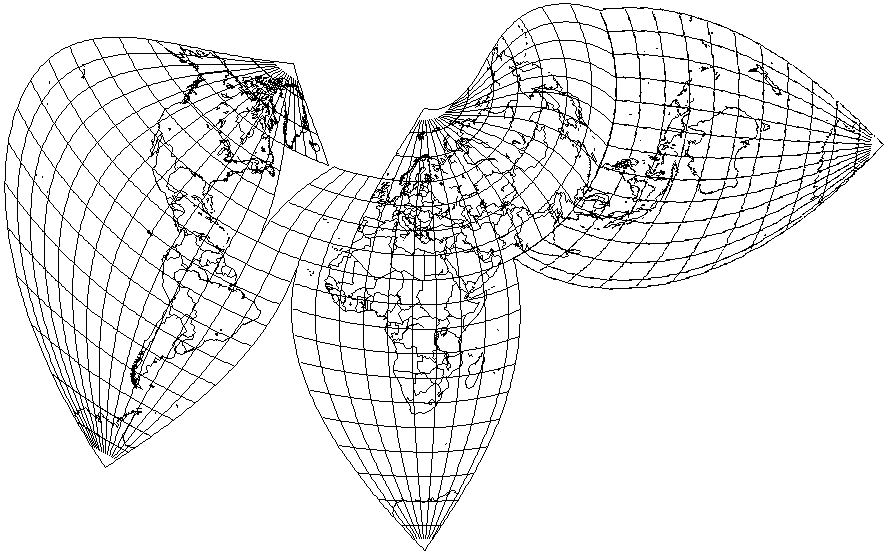But I've encountered frustration in using those projections in an interrupted form to make a pleasing map of the world, as opportunities to interrupt them don't seem to come at the right places. So I went looking for more flexibility. For all I know, the projection I devised in this search, and deemed a failure, may have been invented by someone else before.
Start with a transverse Sinusoidal, with a pole at the center:
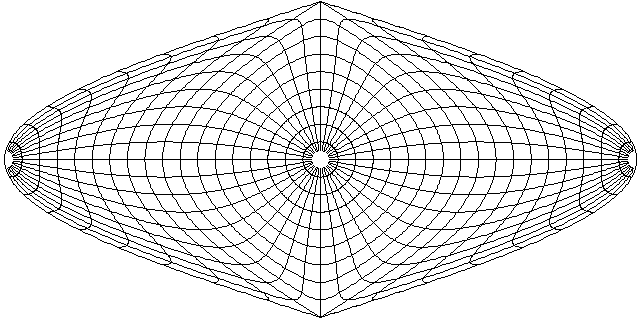
Apply Aitoff's principle to it, but in polar coordinates - and in reverse; stretch first, then squeeze. Here's what I got:
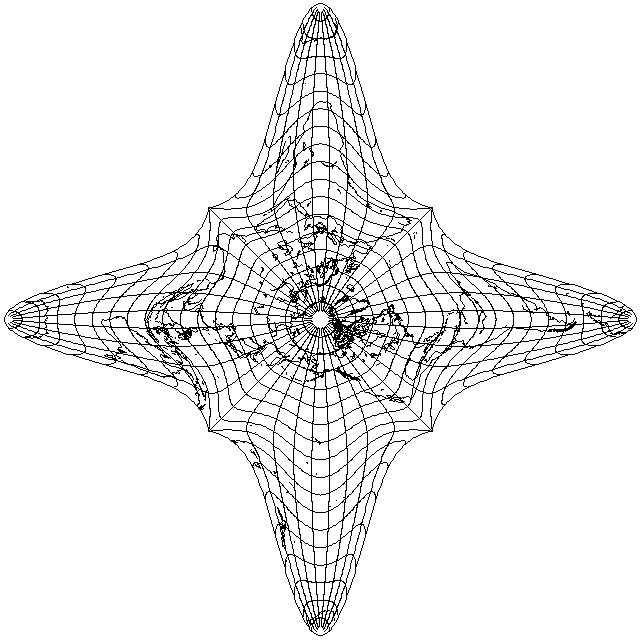
I felt the angular distortion, being much worse than I expected, was too severe to allow this projection to be useful for its intended purpose.
However, it might be that the area near the central pole might still be useful as a tiny piece permitting bits of an interrupted Bonne's or Sinusoidal to be attached together at a different angle.
